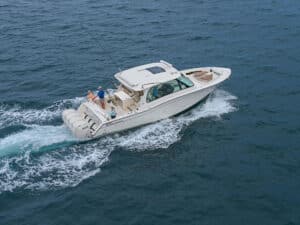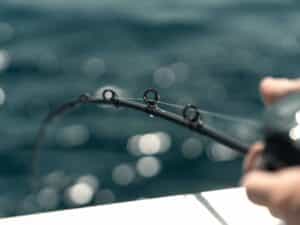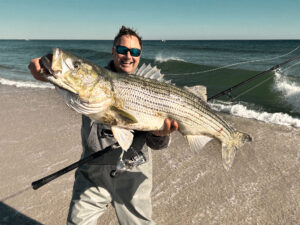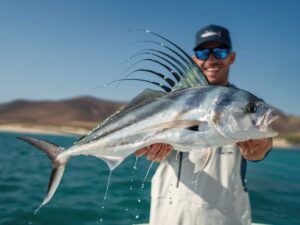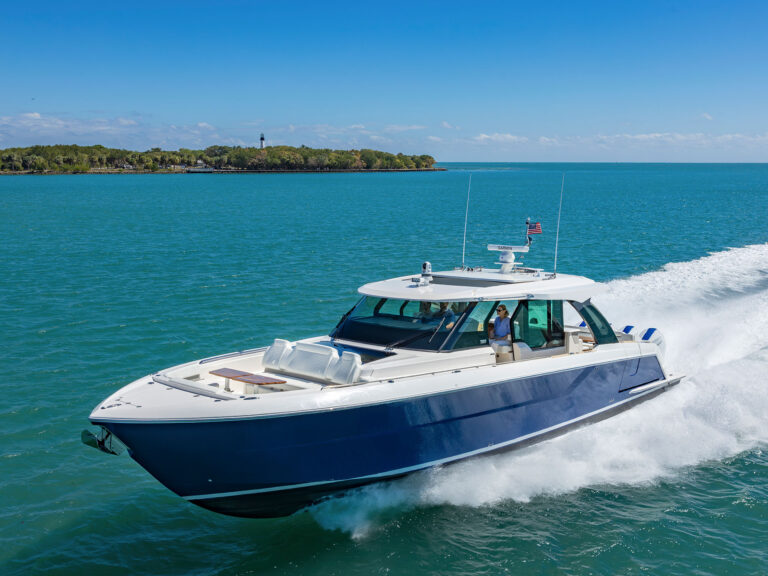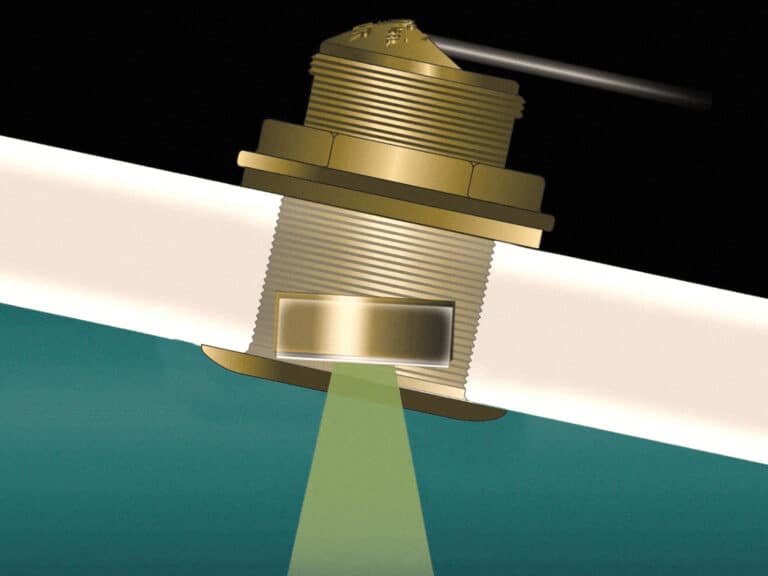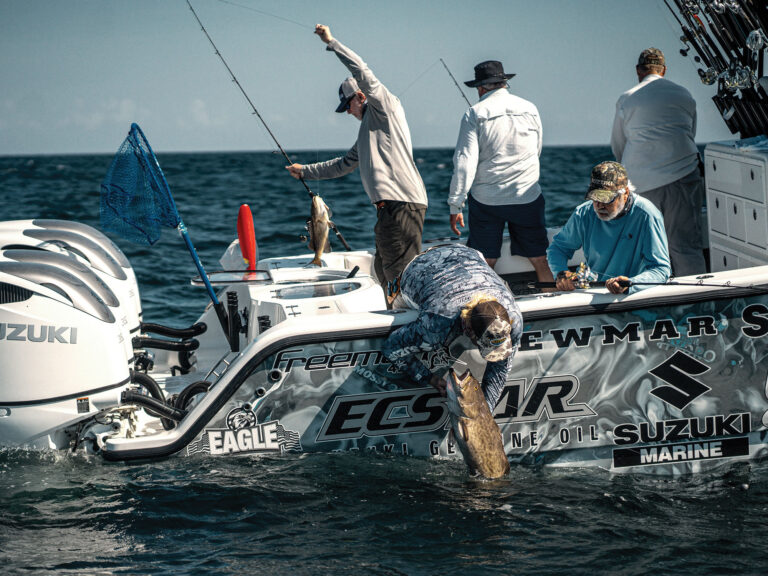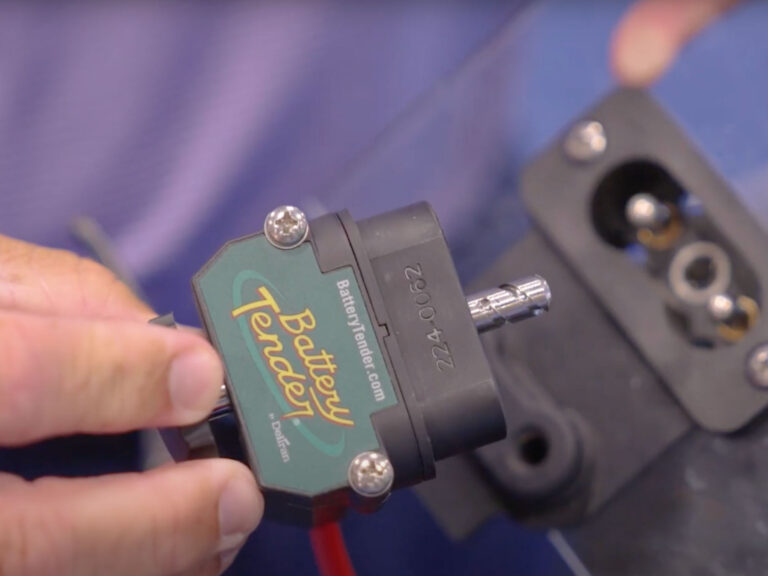
A 24-foot Contender powered by a Yamaha 300 outfitted with AI-based detection systems, thermal imaging capabilities, real-time AIS alerting systems, and advanced vision software. It sounds like a next-level fishing machine made for chasing big game, which it is, but not in the way you think. It’s the WAVS (whale and vessel strike) Taskforce research vessel built for identifying and providing location data for marine mammals, specifically the critically endangered North Atlantic right whale.
It’s what John DePersenaire, Viking Marine Group’s director of government affairs and sustainability, describes as “conservation through innovation.” It’s also a direct response to the controversial 10-knot speed limit rule that NOAA Fisheries first proposed in July 2022 and was ultimately withdrawn earlier this year.
The North Atlantic right whale was named as such because it was the “right” whale to hunt in the 1700s and 1800s because it swam close to shore and floated once killed, making it an easy (or easier) target for commercial whalers looking to harvest its blubber for oil. It was hunted to near extinction: there are currently 370 right whales remaining, including 70 females capable of reproduction. Today, it is vessel strikes, not harpoons, that are injuring and killing the right whales. To combat the issue, NOAA Fisheries proposed a new rule that would expand mandatory speed restrictions to include vessels 35 to 65 feet long and broaden restriction zones.
With boats above 65 feet already under speed restrictions, adding vessels 35 to 65 feet would impact nearly every boat built by the Viking Marine Group.
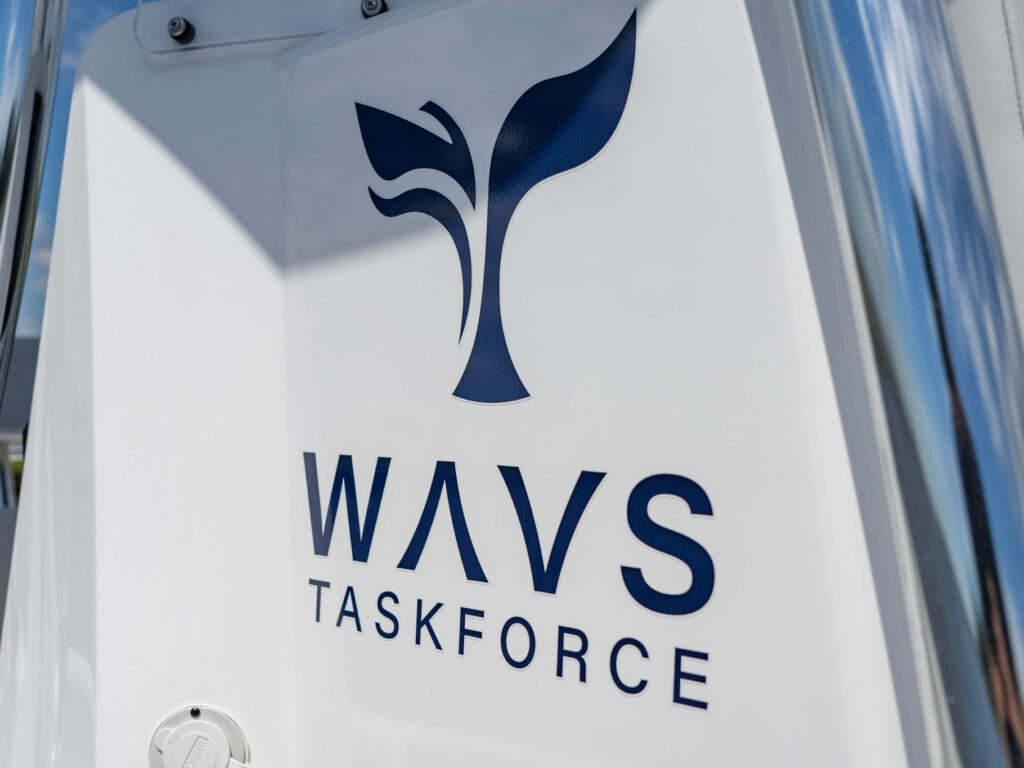
What was Viking’s initial reaction to NOAA Fisheries’ proposal? “We felt dismayed that such a consequential rule could come out of the blue without any involvement with the marine industry,” says DePersenaire. To summarize the industry’s feedback, the new rule would increase travel times and fuel costs, and severely limit the ability to quickly maneuver around adverse weather and other risky situations.
Viking immediately began mobilizing against NOAA’s proposal, engaging scientists and experts to form a taskforce that could develop technology-based approaches to mitigate strike risk. By the time the Fort Lauderdale International Boat Show arrived in late October 2022, Viking had organized a press conference that united dozens of industry representatives in a coordinated response.
Ultimately, NOAA Fisheries’ proposal was defeated due to substantial pushback (over 90,000 public comments were submitted). But the whale strike problem remained, and required solutions. “Even with the proposed rule being withdrawn, Viking and WAVS have been diligently working on this issue from both a policy and technology perspective,” notes DePersenaire.
Cue the WAVS research vessel, powered by a Justice League of marine brands, some of which are competitors. The project brings together major manufacturers including Viking, Contender, Garmin, Simrad, FLIR, Yamaha and Brunswick.
Read Next: NOAA Axes Prohibitive Right Whale Speed Rule
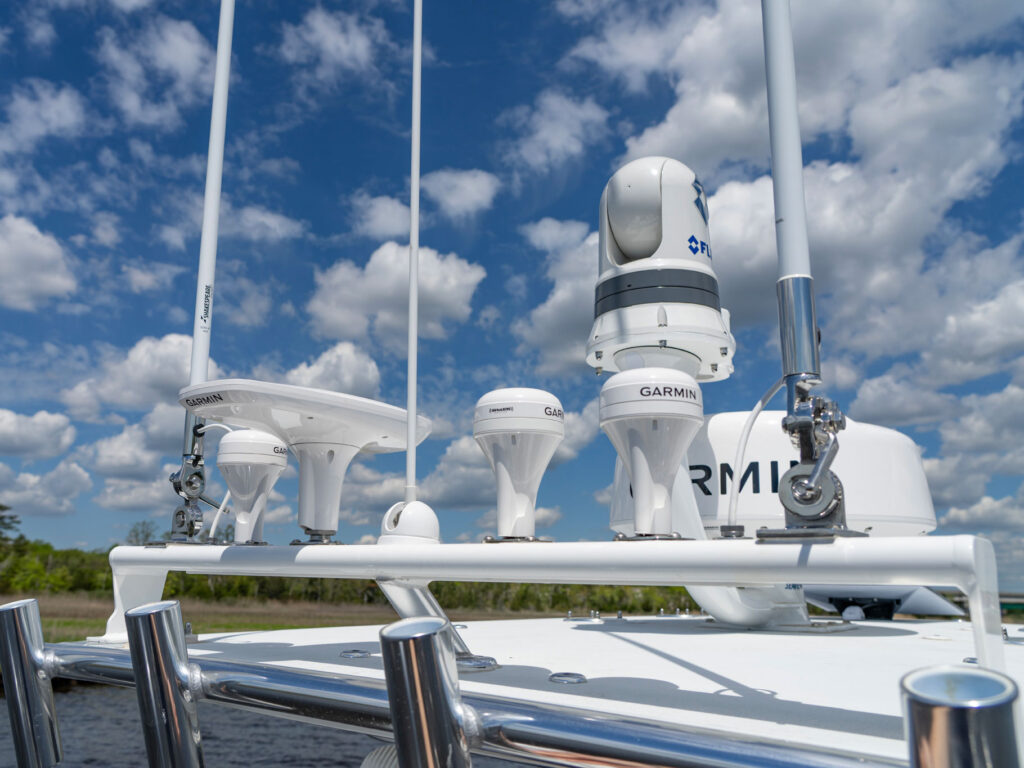
“This vessel gives us a platform to evaluate the technologies that will define the next generation of conservation and safety,” says Todd Tally, general manager of Atlantic Marine Electronics and WAVS board member.
Since its first public appearance at the American Boating Congress (ABC) in Washington D.C. in late May, the WAVS vessel has been actively testing its capabilities along the East Coast, synchronized with the right whale’s migratory path. After its debut at ABC, the boat moved to Massachusetts, operating primarily in Cape Cod Bay where whale activity is abundant.
One of the most promising technologies being tested is Garmin’s new AIS messaging feature, which sends whale alerts directly to chart plotters on thousands of recreational boats. The research vessel is also testing multiple AI classification software systems including Sea.AI, LookOut, and Viam.
During a recent scouting mission, one of the AI systems identified balloons floating on the surface. While not the target the boat was built for, it demonstrated how its technologies might address other environmental concerns like marine debris. “As with most machine learning, the more observations and data that can be fed into the algorithm, the more accurate their detection rates become,” DePersenaire explains.
The East Coast of the U.S. is a large swath of water for one 24-foot Contender, but it can make an impact far beyond its physical location. DePersenaire says the goal is to move the whale detection data off the boat to the cloud where information can be pushed out to boats in areas where whale strikes are common.
While conservation is paramount to this effort, so is preserving a multi-billion-dollar industry. “Without access to the oceans, our sport and all that we love about building the best sportfish boats is gone,” says DePersenaire. “We will do all that we can to keep that going.”

